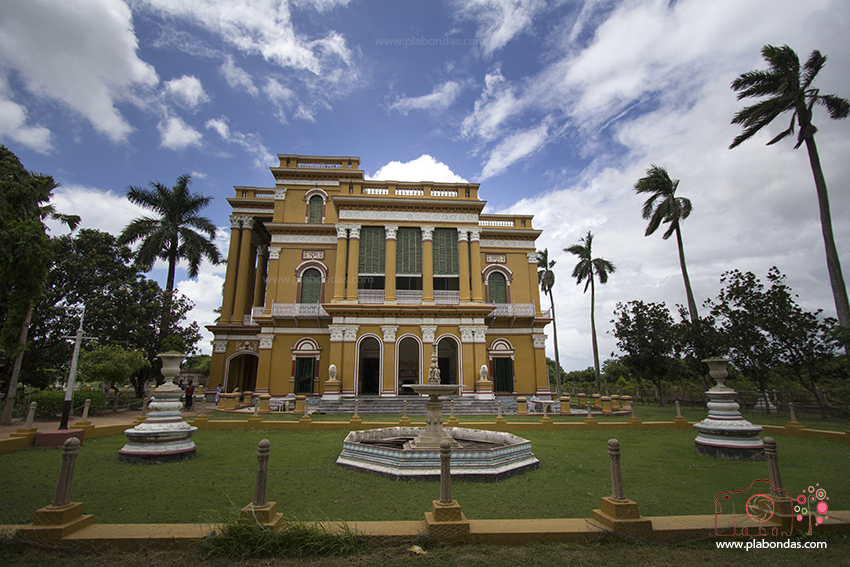Murshidabad: Nestled on the banks of the Ganges River in West Bengal, Murshidabad is a living testament to the grandeur of the Nawabi era and the cultural richness that permeates the region. As we commemorate the first year of our exploration into the historical opulence of Murshidabad, let’s unravel its regal history, architectural splendors, and the timeless allure that defines this former capital of Bengal.
“Step into the historical tapestry of Murshidabad, an erstwhile capital of Bengal during the Mughal era. Explore the remnants of a bygone era through grand palaces, intricate mosques, and historic monuments. Delve into the rich cultural heritage of Murshidabad, known for its connection to Nawabs and colonial history. Uncover tales of the East India Company and the Battle of Plassey as you wander through the architectural wonders and scenic landscapes. Plan your visit to experience the charm of Murshidabad, where history whispers through every ancient structure.”
Historical Legacy: Murshidabad
Once the capital of Bengal during the reign of the Nawabs, Murshidabad served as the seat of power and cultural patronage. Established by Nawab Murshid Quli Khan in the early 18th century, the town witnessed the zenith of the Nawabi dynasty’s influence, leaving behind a legacy of palaces, mosques, and grandeur.
Nawab Hazarduari Palace: Murshidabad
The crown jewel of Murshidabad’s architectural treasures is the Hazarduari Palace, meaning “Palace with a Thousand Doors.” Built in the 19th century during the reign of Nawab Nazim Humayun Jah, this grand edifice boasts 1000 doors, of which only 900 are real, while the rest are false doors designed to confuse intruders. Today, Hazarduari Palace houses the Hazarduari Palace Museum, displaying an exquisite collection of artifacts, paintings, and weaponry from the Nawabi era.
Nizamat Imambara: Murshidabad
Adjacent to Hazarduari Palace stands the Nizamat Imambara, an architectural marvel commissioned by Nawab Nazim Mansoor Ali Khan in the 19th century. This imposing structure, with its massive hall and central arched gateway, serves as a symbol of religious and cultural significance for the local community.
Katgola Palace:
Katgola Palace, another gem in Murshidabad’s architectural crown, showcases a blend of Indo-European architectural styles. Built by the wealthy merchant Duncan McLeod in the 19th century, the palace reflects the fusion of European elegance and Indian craftsmanship. The palace and its gardens are open to visitors, offering a glimpse into the bygone era of prosperity and cultural exchange.
Khushbagh Cemetery:
The Khushbagh Cemetery, also known as the Garden of Happiness, is the final resting place of the Nawabi rulers of Murshidabad. The garden is adorned with intricately designed tombs, creating a serene and reflective atmosphere. The architectural finesse and historical significance of Khushbagh make it a poignant destination for those interested in the region’s regal history.
Silk and Handloom Industry:
Murshidabad is renowned for its silk and handloom industry, producing exquisite varieties of silk sarees and fabrics. The traditional craftsmanship passed down through generations adds a vibrant touch to the cultural identity of the town. Visitors can explore local markets to witness the weaving process and purchase unique handcrafted textiles.
River Cruises and Natural Beauty:
The Ganges River adds to the natural beauty of Murshidabad, and river cruises along its serene waters offer a unique perspective of the town’s historical landmarks. The lush greenery along the riverbanks and the tranquility of the Ganges contribute to the overall charm of Murshidabad.

Conclusion:
As we celebrate the first year of our exploration into the historical opulence of Murshidabad, we stand in awe of its regal architecture, cultural legacy, and the echoes of a bygone era that resonate through its palaces and tombs. Murshidabad invites travelers to step back in time and immerse themselves in the grandeur of Nawabi heritage, ensuring that the tales of the Nawabs continue to captivate and inspire for generations to come.

